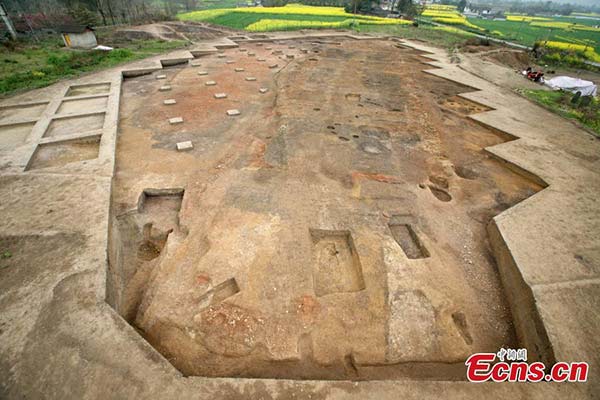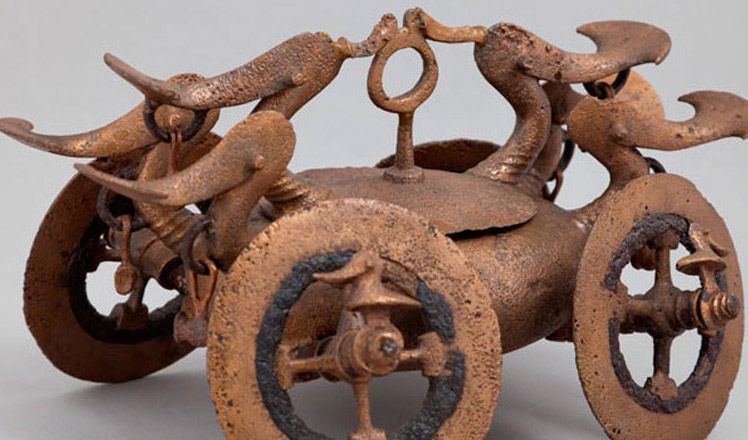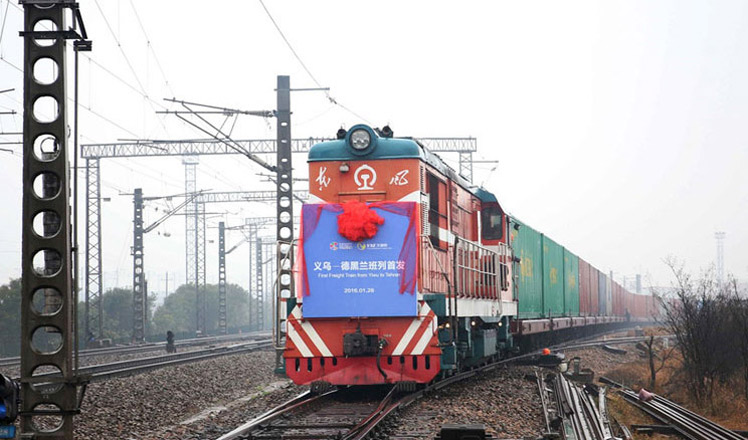New gold, jade artifacts unearthed at pre-historic Sanxingdui Ruins
Updated: 2016-01-29 16:06
(Xinhua)
|
||||||||
 |
|
A view of the excavation at the Sanxingdui Ruins in Guanghan city, Southwest China's Sichuan province, Jan 28, 2016. [Photo/China News Service] |
Precious artifacts such as jade tablets and gold foil have been found in the prehistoric Sanxingdui Ruins in Southwest China's Sichuan province, said archaeologists on Thursday.
The discovery of gold artifact early in 2015 was the first this century. Gold masks were unearthed there in 1986, when the excavation of the ruins, which date back to more than 3,000 years, began.
Five stretches of ancient city walls, discovered in the north of the site between 2011 and 2015, may be part of two small towns, which are 460,000 sq meters and 88,000 sq meters, respectively, said Lei Yu, head of the excavation work with the Sichuan Cultural Relics and Archaeology Research Institute.
The new findings showed the area was likely to be the core zone of the site where high-ranking people lived, he said.
The discovery of gold and jade proved the status of the buildings of at the site, said Lei. "It shows the Sanxingdui site remained rather prosperous in the early period of the West Zhou Dynasty (1046 BC - 771 BC)."
The Sanxingdui Ruins are in Guanghan city, some 40 kilometers from Chengdu, capital of Sichuan. They are believed to be remnants of the Shu Kingdom that suddenly disappeared some 3,000 years ago.
Listed among China's top 10 archaeological findings of the 20th century, the Sanxingdui Ruins, covering an area of 12 square kilometers, gave strong evidence of the diverse origins of Chinese civilization.
The place around the ruins was an ordinary rural area 100 years ago until a farmer, Yan Daocheng, found a bright piece of jade while digging a ditch in 1929.
Two sacrificial pits filled with more than 1,000 national treasures, including gold masks, bronzeware, jade tablets, ivory and sacred trees, were discovered in the area in 1986 when workers were digging clay for bricks.
In 1988, the Sanxingdui Ruins were put under state-level protection.
- Students must learn safety education, experts say
- 73 bodies recovered from rubble of Shenzhen landslide
- Chinese travelers lead 2015 global outbound tourism
- S Korea to issue 10-year visa to highly-educated Chinese tourists
- A glimpse of Spring Rush: little migrant birds on the way home
- Policy puts focus on genuine artistic students
- Negotiating political transition in Syria 'possible': Hollande
- At least three killed in light plane crashes in Australia
- BOJ further eases monetary policy, delays inflation target
- DPRK may have tested components of hydrogen bomb
- Goodwill sets tone at Wang, Kerry's briefing
- Obama picks new Afghan commander

 Djokovic puts down Federer fightback to reach final
Djokovic puts down Federer fightback to reach final
 Treasures from Romania shine in Beijing museum
Treasures from Romania shine in Beijing museum
 First container train links China to Middle East
First container train links China to Middle East
 'Monkey King' performs dragon dance in underwater tunnel in Tianjin
'Monkey King' performs dragon dance in underwater tunnel in Tianjin
 The odd but interesting life of a panda breeder
The odd but interesting life of a panda breeder
 Top 10 best selling cars on Chinese mainland 2015
Top 10 best selling cars on Chinese mainland 2015
 Warm memories in the cold winter
Warm memories in the cold winter
 The world's highest library
The world's highest library
Most Viewed
Editor's Picks

|

|

|

|

|

|
Today's Top News
National Art Museum showing 400 puppets in new exhibition
Finest Chinese porcelains expected to fetch over $28 million
Monkey portraits by Chinese ink painting masters
Beijing's movie fans in for new experience
Obama to deliver final State of the Union speech
Shooting rampage at US social services agency leaves 14 dead
Chinese bargain hunters are changing the retail game
Chinese president arrives in Turkey for G20 summit
US Weekly

|

|







